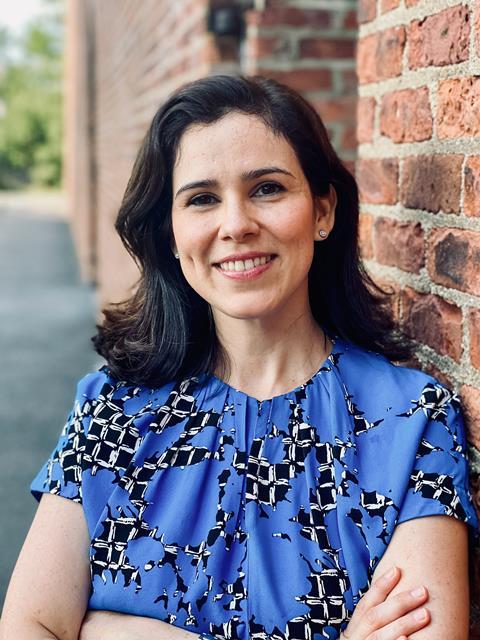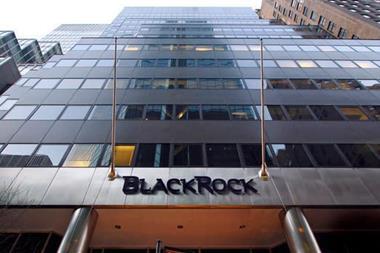Mirtha Kastrapeli, founder and CEO of Beyond Alpha, makes a case for shifting to SDG-based systems investing
Between Larry Fink calling on companies “to disclose a plan for how their business model will be compatible with a net-zero economy,” the decision by New York pension funds to divest an estimated $4bn from fossil fuel companies, and a series of executive orders from the Biden-Harris administration that puts climate change back on the national agenda, it’s easy to see why so many in the financial community are bullish on climate action in 2021.
But if 2020 taught us anything, it’s that the climate crisis is far from the only crisis that demands our attention. Over the last year we have had to collectively deal with a series of overlapping crises, from the health and economic crisis exacerbated by the COVID-19 pandemic, to the inequality crisis fueled by systemic racism and other social injustices, to a crisis in democracy brought on by endless misinformation campaigns and a growing pile of dark money.
These crises have contributed to a growing awareness of the scope and scale of the sustainability challenges that we now face. Institutional and individual asset owners are taking notice, with many committing their capital to sustainable investments in an attempt to make sure that their capital is contributing to creating solutions, instead of causing problems.
However, for all the talk about the transformative potential of sustainable investing, existing strategies like ESG integration and impact investing have largely failed to deliver the kind of progress needed to address our most urgent social and environmental challenges, such as those outlined in the UN’s Sustainable Development Goals (SDGs).
After speaking with more than 40 asset owners around the world for a research report on sustainable investing, it became clear that to make real, tangible progress towards generating better people and planet outcomes, we need a systems-level approach to investing. We need a way to strengthen our shared economic, social and environmental systems, and the SDGs provide an effective blueprint and framework for how to do exactly that.

This is why institutional investors need to embrace SDG-aligned investing, which we define as: “a system-level investment approach that takes into consideration both the risk and return characteristics of an investment, including environmental, social, and governance (ESG) aspects, as well as the positive and negative impacts of that investment in the achievement of the SDGs.”
The advantage of this approach is that it’s designed not just to deliver positive impacts, but also to ensure that all investment decisions are structured so as to minimize harm to our systems.
Institutional investors, given their size and influence, have a unique opportunity and responsibility to drive this change and provide lasting investment opportunities to their clients and beneficiaries. Industry groups like the Council for Inclusive Capitalism with the Vatican have recently signaled their interest in moving towards SDG-aligned investing, but more work remains.
Conviction, Clarity, and Consensus: the 3Cs of SDG-aligned investing
To be successful, SDG-aligned investing requires Conviction, Clarity, and Consensus from investors (the ‘3Cs’). These qualities are the basis for building a comprehensive investment approach that truly supports the SDGs.
Conviction that the SDGs are interconnected and indivisible and that their achievement will strengthen the shared social and environmental systems and create long term value and resilient markets. Part of this conviction requires investors to embrace a broader definition of materiality, such as ‘double materiality’ (where you consider the information about how a company’s activities impact financial performance, as well as how it affects a broader set of stakeholders).
Clarity includes both clarity of definition and clarity of impact.
Clarity of definition is having a clear and honest understanding of what current sustainable investment strategies do and do not do concerning the SDGs’ achievement. It is important to clearly distinguish between what capital is managed using an SDG-Aligned investment approach versus a different approach.
Clarity of impact is understanding that all investments have an impact. Therefore, it is necessary to analyse both the positive and negative effects of portfolios’ underlying holdings towards the achievement of the SDGs. Recent efforts to standardise sustainability reporting could be an important step towards achieving the kind of clarity of impact needed to build an SDG-Aligned investment approach.
Consensus among investors on what’s expected from companies regarding SDG alignment. This type of agreement is paramount to amplify the impact that investors can have on companies’ actions and, consequently, our shared systems.
Strategies for SDG-aligned investing:
After building the foundation for SDG-aligned investing with the 3Cs, investors should mobilise specific investment strategies to achieve the SDGs. The tools noted in this matrix are the ones that we found in our research to be the most effective in contributing to the SDGs. Ideally, an institutional investor embracing SDG-aligned investing would use each box in the matrix as part of a holistic approach.

Embracing a new role for investors
The journey to an SDG-aligned investment approach will not be an easy one. But today’s problems—from climate change to income inequality to social injustice—are too significant and too consequential for investors to remain on the sidelines. It is no longer enough for an institution to hide their head in the sand by saying that “as long as I beat a market benchmark, my work is done.” Institutional investors have a responsibility to deliver better people and planet outcomes, and SDG-aligned investing represents the best way to meet that responsibility for clients, beneficiaries and for generations to come.
Mirtha Kastrapeli is the founder and CEO of Beyond Alpha, a Fellow at Columbia University’s Center for Sustainable Investment, and the author of “We Need to Talk: Why It’s Necessary for Institutional Investors to Embrace SDG-Aligned Investing”. Mirtha is also the former global head of State Street’s Center for Applied Research, an independent think-tank designed to provide insights about the future of the investment industry.




















No comments yet